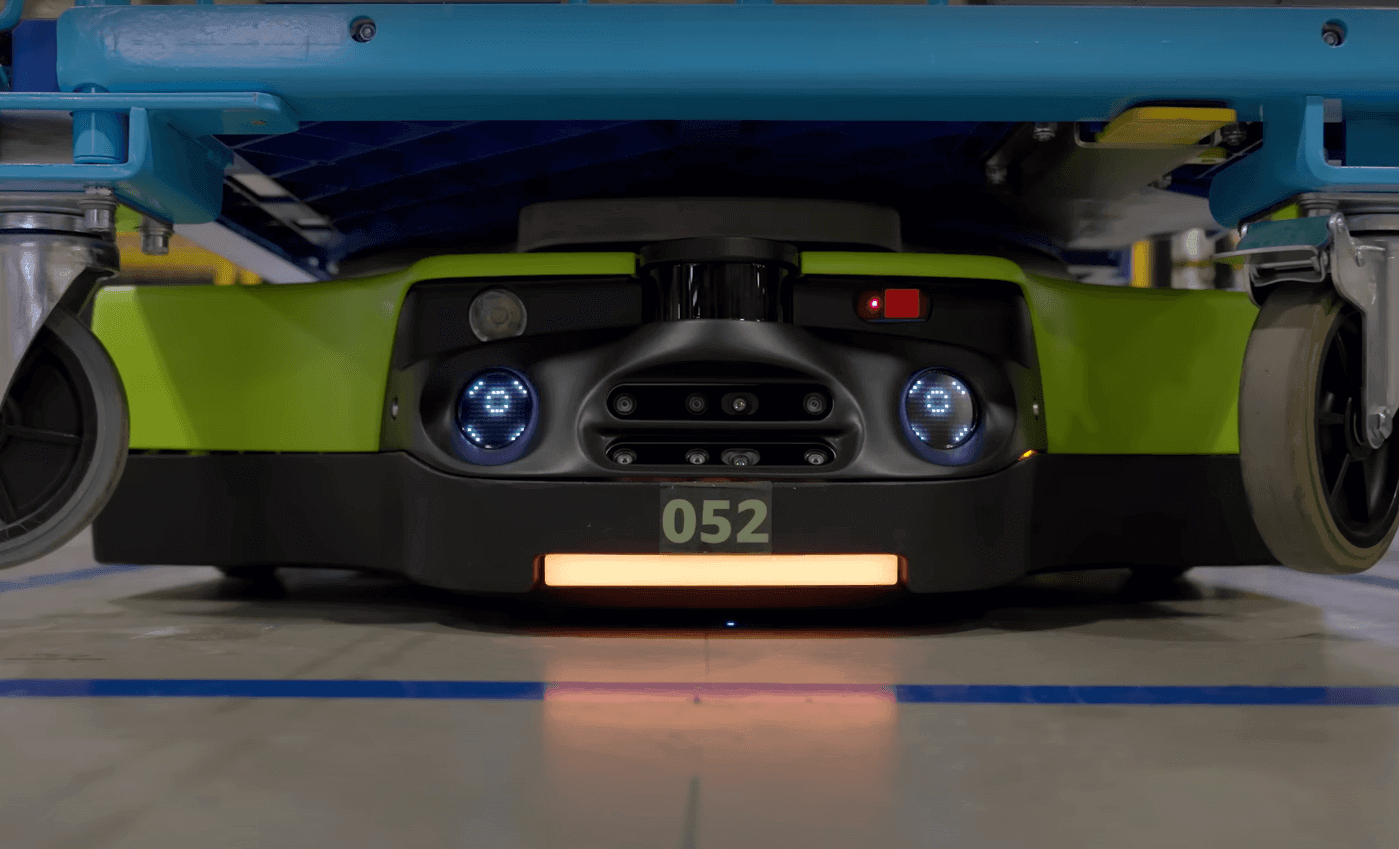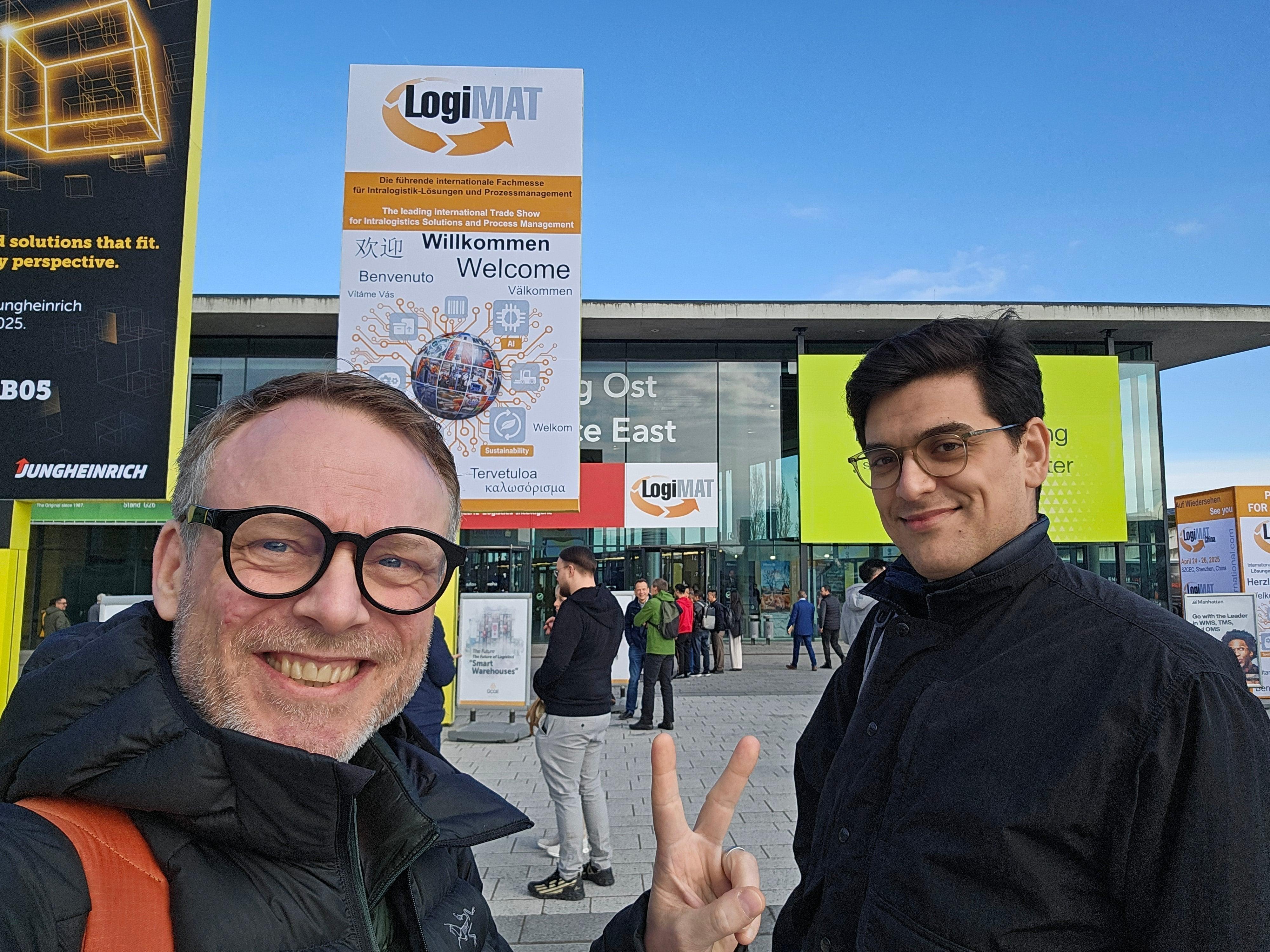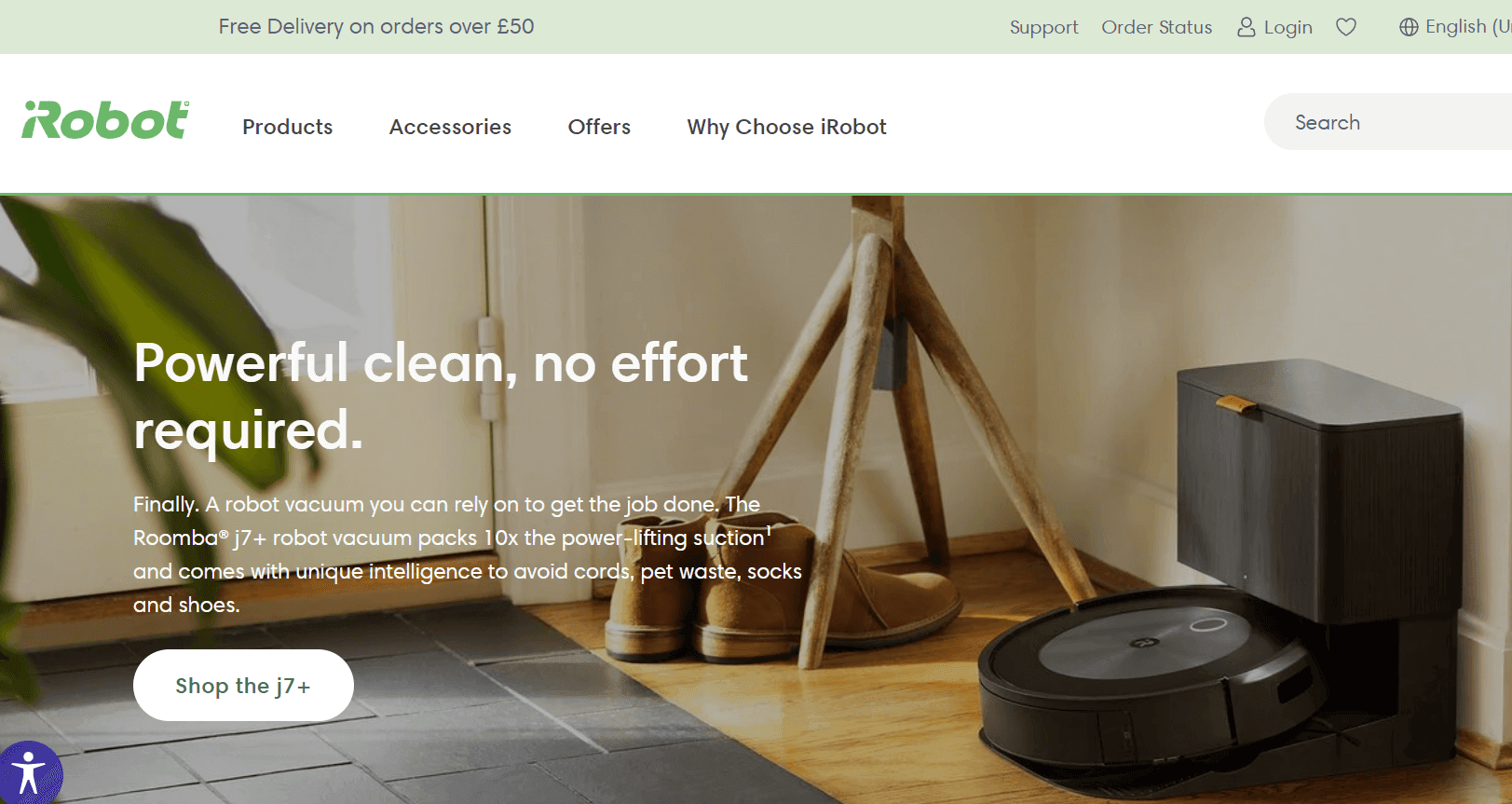Proteus by Amazon: STIQs view

Kiva Systems Acquisition
In 2012, Amazon acquired Kiva Systems, a warehouse robotics company, for $775m (and also triggered increased activity in the wider warehouse robotics sector).
Since 2012, the original Kiva robot has gone through a few iterations, new robot versions or upgrades have been released. Kiva also formed the base for what the division now known as "Amazon Robotics". (source)
The Pegasus Robot
The Pegasus (based on the original Kiva design) is probably the most well known of the Amazon Robotics versions and has also been deployed as a sortation robot. Various media outlets assume Amazon have deployed c.520,000 of these mobile robots. (source)

Source: Amazon. Pegasus in blue.
Most (if not all) of these 520,000 robots have relied on a fiducial (think a "QR code") in the ground to locate itself, often along a matrix layout.
These "G2P AGVs" (Goods to Person Automatic Guided Vehicles) were highly effective and partly responsible for Amazon's increasingly fast delivery promises and their competitive advantage.
However, STIQs view is that Amazon's robotics team optimised and improved the Kiva technology and reached a plateau around 2017/2018 where they couldn't make any additional significant improvements to the system.
Canvas Acquisition
In 2019, Amazon acquired Canvas robotics, a company then at the forefront of R&D in the "natural feature" navigation space. This is also known as "AMR technology" (AMR = Autonomous Mobile Robot). Canvas' technology could be used both in and outside and one of the founders moved to head up Amazon's Driverless Vehicle division.
STIQ has discussed the acquisition in our G2P and AGV & AMR Robotics reports and what it may mean for Amazon. Download our G2P reports to read more on this (STIQ free market reports)
The Proteus Robot
A decade after from the Kiva acquisition and three years after the Canvas acquisition, Amazon Robotics finally released (to the public) their "Proteus" robot. Proteus looks like it is behaving like an AMR, using natural feature navigation.
The green AMR or mobile robot has a very distinct design with a protruding "face" in the front. This It appears to host a puck lidar sensor and two ToF cameras placed at a slight downward and a sharp upwards angle.
This "robot face" appears to be designed so it can peak out from under a cage and get in front of the two wheels for health & safety reasons.
Amazon have released a few videos showing off the robot to the public.
STIQs view is that Proteus will not revolutionise Amazon's fulfilment anywhere near to how Kiva changed Amazon's warehouse fulfilment processes.
Can Amazon deploy Proteus to work in Kiva Systems situations, moving the shelf pods to and from storage and pick/replen stations? Or, what is it Proteus is supposed to do?
Proteus replacing Pegasus?
Kiva and the subsequent Pegasus evolution was instrumental in allowing Amazon to build automated warehouses with fast fulfilment.
However, all automation runs into problems at some point:
One of the problems for Pegasus has been that it stops when there are objects in the way. For example, if an item falls off a shelf pod. Overcoming this problem has been an issue for Amazon Robotics, and one way was to improve training for staff that replenish shelf pods.
Amazon has also experienced issues with running its "robot cages" at full capacity, etc. STIQs impression is that cages can only run at c.80% capacity before there are congestion issues.
Our View
In STIQs view it is unlikely that Proteus will replace Pegasus robots any time soon:
- The volume of Pegasus robots that have been deployed is simply not feasible to replace
- Proteus looks like an AMR and these are often built to be able to avoid obstacles and navigate freely - operating 1,000's of these in a cage may be more complex than with a "fiducial follower" like the Pegasus
- Pegasus robots lack complex functionality such as lidar and front facing camera sensors and are always deployed behind fences shielding people from the robots (AMRs are built to work in the same space as people)
- Further reasons - contact us for a chat
Relevant free reports from STIQ:
AGREE / DISAGREE?
Do you agree/disagree? We would love to hear your views either by responding to this blog or simply send an email to Tom Andersson.






Comentarios